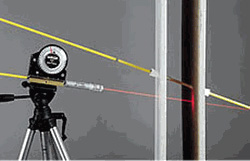|
View in browser: https://www.crime-scene-investigator.net/newsletter/1018.html
|
||
|
October 2018 | ||
|
Welcome to the October 2018 issue of the Crime Scene Investigator Network Newsletter
| ||
|
This Month's Featured Resource on the Crime Scene Investigator Network Website
|
||
 Just as today's law enforcement officer has learned to look routinely for fingerprints to identify the perpetrator of a crime, that same officer needs to think routinely about evidence that may contain DNA. Recent advancements in DNA technology are enabling law enforcement officers to solve cases previously thought to be unsolvable. Today, investigators with a fundamental knowledge of how to identify, preserve, and collect DNA evidence properly can solve cases in ways previously seen only on television. Evidence invisible to the naked eye can be the key to solving a residential burglary, sexual assault, or child's murder. It also can be the evidence that links different crime scenes to each other in a small town, within a single State, or even across the Nation. |
||
|
New CSI and Forensic Job Announcements
|
||
|
The most comprehensive listing of Crime Scene Investigation and Forensic To be notified of job openings as they are posted, follow us on Twitter: Job Posting Alerts |
||
|
Crime Scene Technician
Waterbury Police Department, Waterbury, Connecticut, USA Final Filing Date: October 26, 2018 Evaluates and physically secures crime scenes, using various types of equipment; Identifies, collects and prepares physical evidence for scientific evaluation and comparison; Establishes a permanent record describing the crime scene by writing detailed reports, preparing accurate sketches and diagrams, and by applying professional photographic techniques; Gives expert testimony in criminal court cases regarding the results of analysis and examination of physical evidence; <View complete job listing> |
||
|
Crime Scene Technician
East Point Police Department, East Point, Georgia, USA Final Filing Date: November 10, 2018 This position is responsible for identifying, collecting and preserving evidence at crime scene investigations in support of law enforcement activities. <View complete job listing> |
||
|
Forensic Analyst
Contra Costa County Office of the Sheriff, Martinez, California, USA Final Filing Date: October 19, 2018 The appointee will receive on-the-job laboratory technique and procedures training within the forensic disciplines; perform routine physical and chemical analyses required in forensic investigation, and receive work of a progressively responsible nature and broadening scope as capability and familiarity with laboratory techniques, procedures and equipment develop. <View complete job listing> |
||
 |
||
|
Data Forensics Specialist
Washington State Department of Social and Health Services, Olympia, Washington, USA Final Filing Date: October 22, 2018 Acquire and preserve evidence from PCs, laptops, tablets, servers, cell phones, and other devices. Analyze collected data and present findings to administration leadership, Washington State Patrol, the Attorney General's Office, and State Auditor's Office. Provide expert testimony in administrative or judicial forums. <View complete job listing> |
||
|
Criminalist II (Latent Print Examination)
Broward County Sheriff's Office, Ft. Lauderdale, Florida, USA Final Filing Date: November 2, 2018 Involves the examination of latent print evidence; performing all work related to the analysis, comparison and evaluation of latent prints recovered from crime scenes. <View complete job listing> |
||
|
Police Property & Supply Clerk
Long Beach Police Department, Long Beach, California, USA Final Filing Date: October 19, 2018 Collects all property and evidence held by the Police Department from evidence lockers and/or field locations and transports items to the Evidence Control Section; Operates forklift and/or order picker; Operates personal computer to log all property and evidence and maintain an accurate chain of custody, including a listing of item locations at all times; <View complete job listing> |
||
|
Search for more job listings in Crime Scene Investigations and Forensics To be notified of job openings as they are posted, follow us on Twitter: Job Posting Alerts |
||
|
Other Resources on the Crime Scene Investigator Network Website
|
||
|
Not Subscribed to this Newsletter?
|
||
|
If you are not subscribed to this newsletter, you may subscribe with this link: SUBSCRIBE via email |
||
|
To Unsubscribe
|
||
|
To unsubscribe from future e-mail newsletters, please click here: UNSUBSCRIBE Copyright ©2018 Crime Scene Resources, Inc. Crime Scene Investigator Network |



